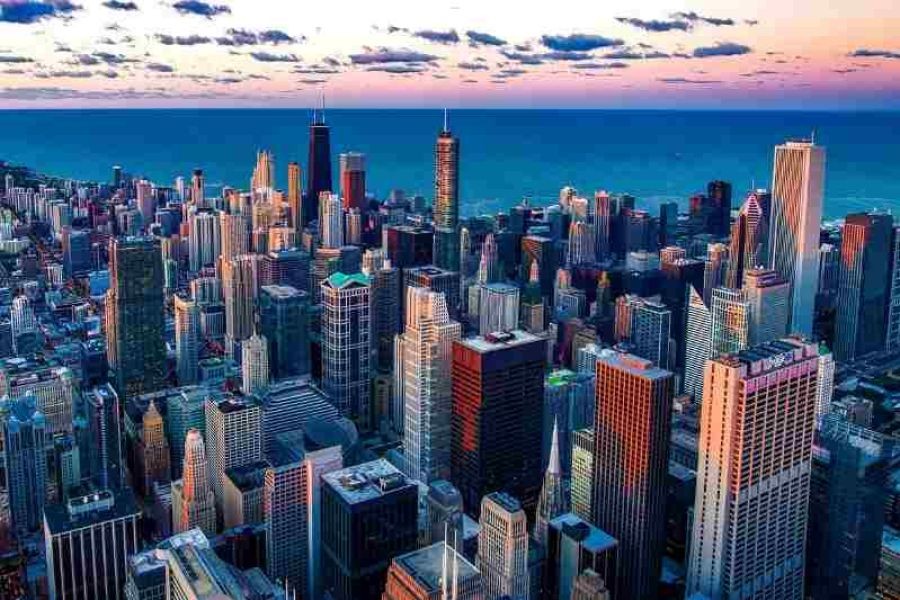As urbanization intensifies in Australia, the concept of high-density living is garnering attention. With cities like Sydney and Melbourne experiencing population booms, urban planners are exploring whether high-density living will become a necessity. This article delves into the implications of such a shift, drawing on data and insights from industry experts to provide a comprehensive understanding of the potential future of Australian cities.
Understanding High-Density Living
High-density living involves constructing residential buildings that accommodate a large number of people per square kilometer. This approach contrasts with traditional suburban sprawl, which features detached homes spread over vast areas. High-density living is not just about taller buildings; it encompasses efficient land use, integrated public transport, and sustainable urban design. In Australia, the trend towards high-density living is driven by a combination of economic, environmental, and social factors.
Economic Drivers
The Reserve Bank of Australia (RBA) notes that housing affordability is a significant challenge, with property prices in major cities escalating rapidly. According to CoreLogic, Sydney's property prices increased by 12% in 2024, outpacing wage growth. High-density developments offer a solution by providing more affordable housing options, enabling better access to city centers where job opportunities are abundant.
Environmental Considerations
The environmental benefits of high-density living are significant. Compact urban areas reduce the reliance on automobiles, lower carbon emissions, and promote energy efficiency. The Australian government's commitment to the Paris Agreement reinforces the need for sustainable living solutions. High-density developments can contribute to this goal by reducing per capita energy consumption and fostering greener lifestyles.
Case Study: Green Square, Sydney
Green Square is a prime example of high-density development in action. Once an industrial area, it is now one of Australia's most significant urban renewal projects. Designed to accommodate over 61,000 residents by 2030, Green Square incorporates sustainable infrastructure, public spaces, and efficient transport links. The result is a vibrant community that balances high-density living with quality of life.
Problem: The area was initially plagued by outdated infrastructure and environmental degradation, making it unattractive for residential use.
Action: The City of Sydney invested in revitalizing Green Square, focusing on sustainable urban design, including stormwater management systems and energy-efficient buildings.
Result: Property values in Green Square have increased by 20% over the past five years, and resident satisfaction rates are high, with 85% of residents expressing contentment with their living conditions.
Takeaway: Green Square demonstrates that high-density developments can enhance urban living when paired with sustainable planning and community engagement.
Challenges and Criticisms
Despite its benefits, high-density living is not without challenges. Critics argue that it can lead to overcrowding, strain public services, and reduce the quality of life. The Australian Competition & Consumer Commission (ACCC) has noted concerns about infrastructure keeping pace with population growth. Additionally, cultural preferences for detached housing pose a significant hurdle in shifting public perception.
Common Myths & Mistakes
- Myth: High-density living always leads to overcrowding and reduced quality of life. Reality: Proper urban planning and community amenities can mitigate these issues, as seen in successful projects like Green Square.
- Myth: High-density living is only applicable in large cities. Reality: Smaller cities can also benefit from high-density developments by enhancing urban efficiency and sustainability.
- Myth: High-density living is less environmentally friendly. Reality: Concentrated populations reduce the carbon footprint per capita and promote sustainable resource use.
Future Trends and Predictions
As Australia's population continues to grow, high-density living will likely become more prevalent. The Commonwealth Scientific and Industrial Research Organisation (CSIRO) predicts that by 2030, 50% of Australia's urban population will reside in high-density areas. Advances in technology, such as smart city solutions and green building materials, will further enhance the viability of high-density developments.
Prediction: By 2028, high-density living will be a standard approach in urban planning across Australia, driven by economic necessity and environmental imperatives. Cities will increasingly integrate renewable energy sources and smart technologies to optimize urban living.
Conclusion
The potential for high-density living in Australian cities is immense. While challenges exist, the benefits of sustainable, efficient, and affordable urban living are compelling. As Australia navigates the future of urban development, high-density living will likely become a cornerstone of city planning. The key to success lies in balancing density with livability, ensuring that urban environments remain vibrant, inclusive, and sustainable.
What’s your take on high-density living in Australia? Share your thoughts and experiences in the comments below!
People Also Ask
- How does high-density living impact Australia's urban landscape?High-density living optimizes land use, reduces urban sprawl, and supports sustainable city planning, essential for accommodating Australia's growing urban population.
- What are the environmental benefits of high-density living?High-density living reduces carbon emissions, promotes energy efficiency, and supports sustainable resource use, contributing positively to environmental goals.
- What challenges does high-density living face in Australia?Challenges include infrastructure strain, cultural resistance to dense living environments, and ensuring quality of life in high-density areas.
Related Search Queries
- High-density living benefits
- Urban planning in Australia
- Sustainable city development
- Green Square Sydney project
- Challenges of high-density living
- Future of urbanization in Australia
- Environmental impact of urban density
- Smart city solutions in Australia
- Renewable energy in urban planning
- Affordable housing strategies Australia































EmeryNwa14
8 months ago